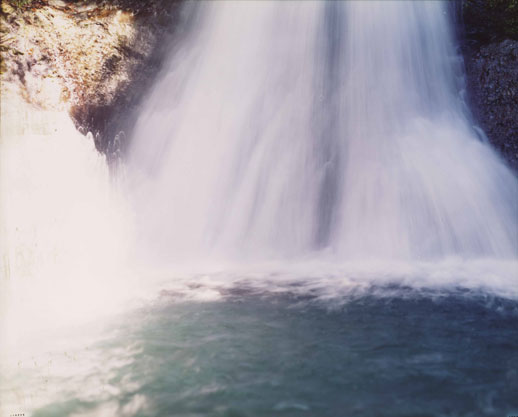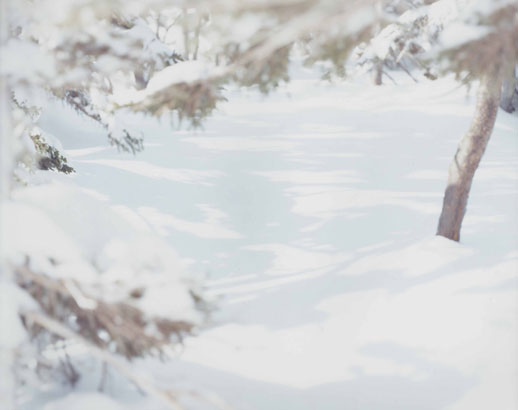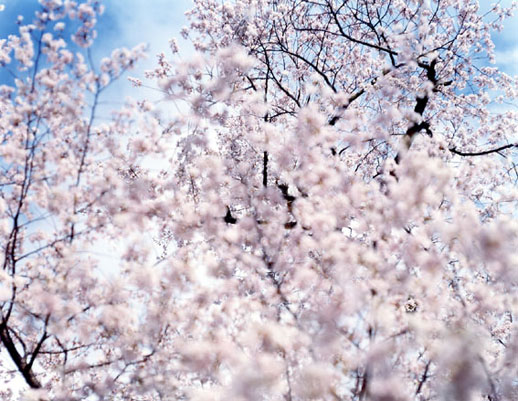Black Box, White Box: Setting Foot in Risaku Suzuki’s Nature Photography
Seeing Risaku Suzuki’s “Kumano, Yuki, Sakura” is a truly visceral experience. With the exhibition divided into three parts, you are first treated to photographs of forests and waterfalls in Kumano, lit up on panels and displayed in a black room, the light emitted from the photographs silently glowing and sucking in your gaze. Next, black and red photographs of men gathered around a fire during a “shinji” (Shinto ceremony), and pictures of (what looks like) snow falling from the sky adorn a small corridor which gradually takes you from darkness into light as you walk closer to the next room. The final room is almost completely white, with photographs of snow and white cherry blossom trees mounted on white walls.

The effects of colour and lighting in the three sections force you to interact on a deeper sensory level beyond visual perception. The photos of green forests and waterfalls enwrap the viewer in the tranquilities of mother nature in the first black room. Yet their eerie, artificial glow – like computer interfaces in the dark – simultaneously draws you into having a closer squint at the details, which look less and less “natural” the longer you look. Water running down the fountains looks like white string, and the vivid green branches seem too clean, almost digital.
Your senses are quickly jolted upon entering the corridor, as the viewer is confronted by fierce images of the rawness of human life. Men huddle around a huge fire in pitch darkness, their flesh bright red against the blaze, faces taut, as though bordering on insanity. Amidst an exhibition predominantly featuring the beauties of nature, these few photos offer a poignant contrast and are the only things close to any form of commentary that Suzuki reveals. With their intense darkness, they also serve as a brief climactic moment in the three part progression, before light slowly pours into the walkway and abstract photos of white specks on black – most probably snow falling from the sky – ease you into the visuals of the next room, which takes snow as its theme.

Stepping into the final room, you are temporarily blinded by the sheer whiteness of it all. Photos of the largely white snow mounds and white cherry blossoms interspersed on the white walls seem to overflow from their frames, filling the entire room. The sudden transition from dark to light plays tricks on your eyes, and you become consumed in the space. In contrast to the black room where the photos draw you in, these white photos explode beyond the frame, and the effect is exhilarating. The final photograph of the exhibition – the only picture in the room depicting pink cherry blossoms against blue skies – offers a sort of cathartic relief from the whiteness. The pastel pinks and blues look stunning, as if you are seeing colour for the first time in your life.

While Suzuki’s photos do not particularly stand out when seen individually, the presentation of “Kumano, Yuki, Sakura” – the separation of each series, the lighting, colour and so on – make his photographs a joy to experience. When more than often ‘important’ works by prominent artists are merely framed and placed on white walls at eye-level, this unusual and bold presentation is a welcome change, providing dynamism to what might otherwise end up being another exhibition of merely ‘pretty’ imagery.
Lena Oishi
Lena Oishi



